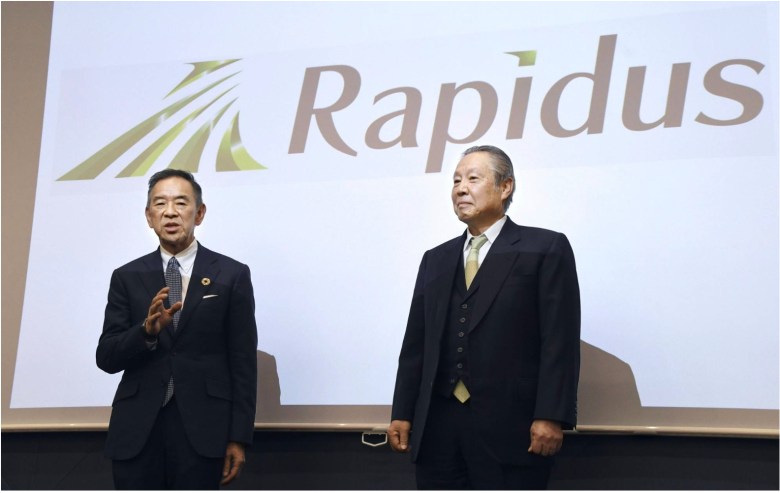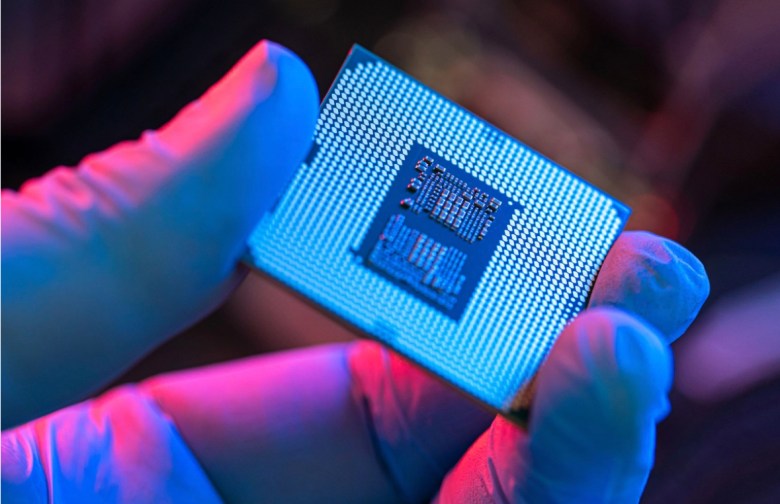Japan’s Rapidus positioning to win 2nm chip race

It was a big week for Japanese semiconductors, one that could ultimately put the country back on the cutting edge of the crucial technology industry.
First, there was the announcement of a “joint development partnership” between IBM and Rapidus, a new venture established to provide advanced integrated circuit foundry (contract manufacturing) services in Japan. Then was the Semicon Japan trade show, where the nation’s formidable semiconductor production technology was on full display.
The IBM-Rapidus partnership, announced on December 12, aims to commercialize IBM’s 2-nanometer process technology by 2027 in Japan. That would go a long way towards catching up with TSMC, Samsung and Intel in advanced logic chip production capability.
Rapidus combines the efforts of Kioxia (formerly Toshiba), a leading producer of NAND flash memory; Sony, the world’s top producer of image sensors; Toyota and its group semiconductor maker Denso; NTT, Japan’s leading telecom carrier; NEC, its largest telecom equipment maker; Softbank; and Mitsubishi UFJ, Japan’s largest bank. More information about Rapidus and the policy and R&D center behind it can be found here.
IBM announced its 2nm technology in May 2021, claiming at the time that it was a world first. But TSMC is already building a 2nm wafer fab in Taiwan that is reportedly scheduled to start production in 2025. Nevertheless, a gap of only two years should put Japan back in the high-end chip game. IBM is also working with Intel.
Rapidus President and CEO Atsuyoshi Koike said in a press release: “This is a long-desired international collaboration, truly essential for Japan to once again play a vital role in the semiconductor supply chain.”


Koike’s statement is partly an exercise in humility: Japan is already a major producer of automotive, power, optoelectronic and memory semiconductors.
But it has in fact fallen far behind in the race to shrink logic chip process technology. Japanese companies make much of the equipment used to produce integrated circuits at 7nm and below, but not for use in Japan.
To put this in perspective, Japan knocked Intel out of the memory chip business and dominated the world semiconductor market for a brief period in the 1990s. But Intel quickly bounced back to lead the industry with its microprocessors, a story told by former Intel CEO Andy Grove in his book “Only the Paranoid Survive.”
Then Samsung stole away Japan’s DRAM memory chip business before going on to become the top producer of NAND flash memory as well – a bold feat considering NAND flash memory was invented in Japan.
Now, Japan is having an only-the-paranoid-survive moment. Its Ministry of Economy, Trade and Industry (METI) sees Rapidus as its “last chance” to stay in the chip-making game. Like the US, it is also worried about having to outsource production of its most advanced chips to TSMC’s factories in Taiwan with the looming threat of a Chinese invasion.
According to Dario Gil, IBM’s senior vice president and director of research, “This collaboration is critical to ensure a geographically balanced global supply chain of advanced semiconductors.”
As part of the new agreement, Rapidus engineers and scientists will work with their IBM counterparts at the Albany NanoTech Complex in New York, one of the world’s most advanced semiconductor R&D institutions. Other companies represented in Albany include Samsung Electronics, GlobalFoundries, Applied Materials, Lam Research and Tokyo Electron.
On December 6, Rapidus signed a Memorandum of Cooperation with imec, the international nanoelectronics R&D center headquartered in Belgium. Imec may also collaborate with Japan’s new Leading-edge Semiconductor Technology Center, which supports Rapidus. Tokyo Electron and other Japanese companies have worked with imec for several years.
In November, Rapidus was chosen by Japan’s New Energy and Industrial Technology Development Organization (NEDO) to contribute to the development of advanced semiconductor manufacturing technology as part of its Post 5G Information and Communication Systems Infrastructure Enhancement R&D Project.
The name Rapidus derives from the word “rapid.” The company is moving rapidly now and will need to continue doing so to develop the technology and build sufficient capacity for mass production of logic chips down to the cutting edge of 2nm in the second half of this decade.
On the production side, Rapidus will be supported by Japan’s numerous semiconductor equipment and materials companies, as well as those in the US and Europe. Several hundred of them were represented at the Semicon Japan trade show held at Tokyo’s Big Site convention center from December 14-16.
Participants included almost the entire Japanese industry, related industry associations and academic institutions, as well as many leading European and American companies. Covid-related precautions were limited to masks and temperature scans, and the event was reasonably crowded.
A few Korean and Taiwanese equipment companies were also present (there are only a handful). Two small Chinese companies were there, but notably none of the top Chinese equipment makers. The next Semicon China is scheduled to be held in Shanghai from June 29 to July 1, 2023.
The exhibition made it clear that Japanese equipment and materials companies have been very busy during the pandemic. New products ranged from lithography to assembly to packaging and test to electronic design automation to robots and ceramic components.


Expert presentations and seminars were held on subjects including the status of EUV lithography (the current leading-edge technology denied to China), new lithography technologies, innovative packaging, automotive and power devices, quantum computing, and supply chain security, among others.
All of this is important to the success of Rapidus, which will progress towards 2nm with the support of the complete US, European and Japanese semiconductor ecosystems. Even TSMC, with which Rapidus aims to compete, will provide support through its advanced packaging development project in Japan.
As such odds are that Japan will get to 2nm before China, which is increasingly being denied access to this leading-edge ecosystem.
Follow this writer on Twitter: @ScottFo83517667



